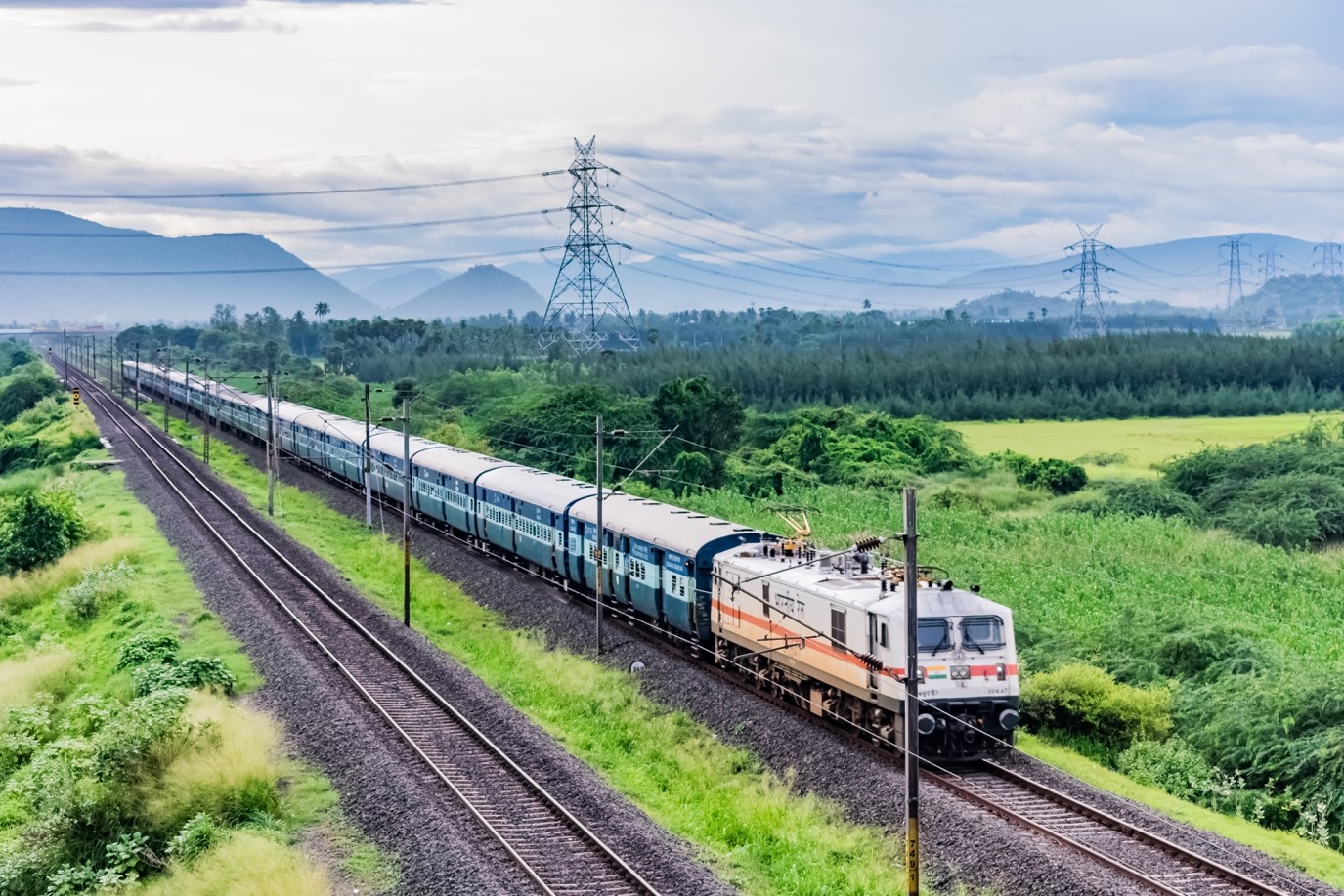
India has one of the largest railway networks in the world, but that is only part of what makes it an exemplary transport system. The intricate matrix of connectivity it provides across a huge and widely populated country, coupled with an impressive frequency of trains to the remotest areas, makes it a very accessible method of travel for many Indians and tourists. Add to that the fact that it is almost 170 years old, and you know why most people put their faith in this inexpensive mode of transport even so many years after its inception. Here are a few interesting facts on the lifeline of the Indian transport system:
-
India’s First Train:
Contrary to popular belief, the first train in India was the Red Hill Railway, which ran from Red Hills to Chintadripet bridge in 1837. Sir Arthur Cotton was credited with building the train, which was mainly used for transporting granite.
-
India's Fastest Train:
The New Delhi-Bhopal Shatabdi is currently India’s fastest train, reaching a maximum speed of 150 kmph. However, railway minister Piyush Goyal announced that the newly launched Train 18, manufactured by the Integral Coach Factory in Chennai can reach speeds as high as 200 kpmh.
-
Train with Longest Route:
The Vivek Express, running between Dibrugarh and Kanyakumari, covers 4,286 km in around 82 hours and 30 minutes. This journey is not just the longest in India, but in the entire subcontinent.
-
Longest Railway Platform in India:
The platform at Gorakhpur Railway Station in Uttar Pradesh is the world’s longest station, measuring a whopping 1,366 m. The record was previously held by the platform at Kharagpur station in West Bengal at 1,072 m.

-
First Electric Train in India:
The first electric train in India ran on 3 February 1925, between Bombay Victoria Terminal and Kurla Harbour. Later, the electric line was extended to Nashik's Igatpuri district and then to Pune.
-
First Passenger Train in India:
India’s first passenger train started its service 166 years ago on 16 April 1853, covering a stretch of 33 km from Mumbai to Thane. The train carried 400 passengers. Interestingly, this day was also declared a public holiday.
-
First Bullet Train in India:
The first bullet train in India will be launched in 2022 by the National High-Speed Rail Corporation Limited (NHSRCL). The train will run from Mumbai to Ahmedabad, connecting various cities of Gujarat to Mumbai.
-
Laying of First Railway Track in India:
On 21 August 1847, The Great Indian Peninsula Railway, along with The East India Company, constructed a 56 km railway line which formed a part of the line connecting Bombay with Khandesh and Berar. James John Berkeley was appointed as the Chief Resident Engineer. This railway line was used for India's first passenger railway, with the original opening in 1853.
-
Largest Railway Junction in India:
Mathura junction is the largest railway junction in India, with as many as 7 routes emerging from this station. Mathura junction also has 10 platforms, with connectivity to all major cities of India.
-
First Railway Station in India:
Bori Bunder, located in Mumbai was the first railway station in India. India’s first passenger train ran from Bori Bunder to Thane in 1853. It was built by the Great Indian Peninsular Railway. This station was rebuilt as Victoria Terminus later in 1888, named after Queen Victoria.
-
Most Expensive Luxury Train in India:
The Maharaja’s Express is the most expensive luxury train in India and is also among the most expensive in Asia. Over a course of 8 days, the Maharaja Express takes its guests over some of the most prominent tourist destinations in India, including the Taj Mahal, the Khajuraho temples, Ranthambhore, Fatehpur Sikri and the bathing Ghats of Varanasi. Pricing starts at $ 800 for a deluxe cabin. The most expensive ticket of the presidential suite sets you back a whopping $ 2,500.

-
The Adorable Indian Railways Mascot:
Bholu the guard elephant is the mascot of the Indian Railways. Bholu was designed by the National Institute of Design in 2002 in honour of the 150th anniversary of the Indian Railways. Bholu is seen holding a signal lamp with a green light in it, which symbolises movement, assurance to trains and passengers to go ahead without fear.
-
India's Oldest Working Locomotive:
The famous Fairy Queen is the world’s oldest working locomotive that is still in use. Manufactured way back in 1855, the Fairy Queen was listed in the Guinness Book of Records as the world's oldest steam locomotive in regular service. The Fairy Queen was interestingly given heritage status in 1972 by the Indian government, giving it the status of a national treasure.

-
Railway Museums in India:
India is home to 8 Railway Museums – in Delhi, Pune, Kanpur, Mysore, Kolkata, Chennai, Ghum and Tiruchirappalli. The National Railway Museum in Delhi is the most visited museum in India, with millions of tourists flocking to witness the rich heritage that the museum offers. The Fairy Queen, the world’s oldest working locomotive is one of the main tourist attractions at the museum. This museum is also the largest rail museum in Asia.
-
Vast Railway Network in India:
The Indian Railways’ track is spread across a massive 115,000 km, making it the largest rail network in Asia and the world’s second largest network operated under a single management. The entire track covers a route length of 67,368 km. The full track length of Indian Railways can circle the equator 1.5 times.
-
Slowest Train in India:
Mettupalayam Ooty Nilgiri Passenger train is the slowest train in India, running at a speed of 10 kmph, which is roughly 16 times slower than the fastest train in India. The train covers 46 km in about 5 hours, which is due to the train operating in a hilly area. The scenic view offered makes up for the speed of the train.
-
First Computerised Reservation in India:
In 1986, Indian Railways started its first computerised reservation in New Delhi. Before the computerised era, Indian railways followed the traditional manual registry entry method, which resulted in passengers standing in queues for hours at a stretch.
-
Longest Station Name in India:
Venkatanarasimharajuvariipeta in Andhra Pradesh, and at the Tamil Nadu border, is the station with the longest name (29 letters). Locals usually add the prefix ‘Sri’ before the name, making it longer by 3 letters.
-
Shortest Station Name in India:
‘Ib Railway station’ in Odisha has the distinction of having the shortest name of all stations in the entire Indian Railways network. The famous station derives its name from the Ib river, which is a tributary of Mahanadi.
- https://www.business-standard.com/article/beyond-business/18-interesting-facts-about-india-railways-business-standard-news-115021600404_1.html
- https://www.scoopwhoop.com/inothernews/indian-railways/#.l96xoh8ac
- https://www.thebetterindia.com/27496/interesting-facts-indian-railways/
- http://www.walkthroughindia.com/walkthroughs/trains/51-interesting-and-must-know-facts-about-indian-railways/






